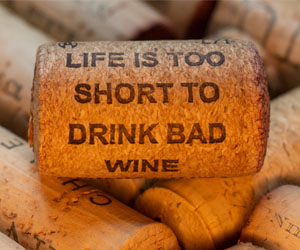


The Allure Of Vintage Items
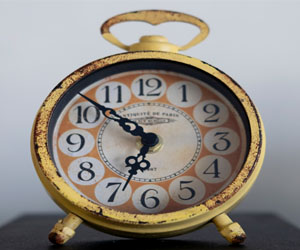
Vintage items, with their unique charm and enduring appeal, hold a special place in the hearts of collectors, enthusiasts, and those seeking a touch of nostalgia. These age-worn treasures, ranging from clothing and accessories to home decor and collectibles, embody history and craftsmanship. In this article, we explore the timeless allure of vintage items and why they continue to captivate people around the world.
A Glimpse Into The Past
Vintage items transport us back in time, allowing us to connect with the past and experience the styles and aesthetics of bygone eras. Each vintage piece carries a story, representing the culture, trends, and craftsmanship of the time in which it was created. It's like holding a tangible piece of history in your hands.
Unique And One-Of-A-Kind
One of the primary attractions of vintage items is their uniqueness. Unlike mass-produced modern goods, vintage pieces are often one-of-a-kind or produced in limited quantities. This rarity gives vintage items a sense of exclusivity and individuality, making them highly sought after.
Quality Craftsmanship
Vintage items are known for their superior craftsmanship. In the past, attention to detail and quality were highly prized, resulting in products that were built to last. Vintage clothing often features hand-stitched seams, while vintage furniture may showcase intricate woodwork. The durability and craftsmanship of vintage items are often far superior to their modern counterparts.
Sustainable Shopping
In a world increasingly concerned about sustainability and environmental impact, vintage shopping has gained popularity as a sustainable alternative to fast fashion and disposable consumer goods. Buying vintage items extends the life cycle of products and reduces the demand for new manufacturing, contributing to a greener and more eco-conscious lifestyle.
Time-Tested Durability
The fact that vintage items have stood the test of time is a testament to their durability. When well-maintained, vintage items can continue to serve their intended purpose or find new life in creative and decorative ways. For example, vintage suitcases can be repurposed as decorative storage, and old mason jars can be used for home canning or as unique vases.
Embracing Personal Style
Vintage items allow individuals to express their personal style in a way that stands out from contemporary fashion. Vintage clothing, accessories, and decor pieces are distinctive and can be combined with modern elements to create a style that is uniquely your own.
A Collector's Passion
Many people find collecting vintage items to be a deeply rewarding hobby. Whether it's collecting vintage vinyl records, classic automobiles, or antique porcelain dolls, the pursuit of vintage treasures offers a sense of fulfillment and the joy of discovery.
Vintage items are more than just old artifacts; they are time capsules, carrying the spirit of eras long past. The allure of vintage items lies in their history, uniqueness, quality, and sustainability. Whether you're a collector, a fashion enthusiast, or someone seeking to infuse your life with a touch of the past, vintage items offer a window into a bygone world and provide a sense of connection to the timeless elegance of the past. As you explore the world of vintage items, you embark on a journey filled with history, craftsmanship, and the joy of discovering treasures from the past.
Elevating Woodworking To The Next Level
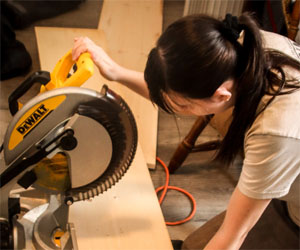 Unparalleled Beauty: Hardwood is prized for its unparalleled beauty. The wood's grain patterns, color variations, and intricate figuring make it an ideal choice for crafting. Whether you're creating fine furniture, ornate carvings, or decorative inlays, the natural aesthetics of hardwood add a level of elegance and sophistication that is unmatched.
Unparalleled Beauty: Hardwood is prized for its unparalleled beauty. The wood's grain patterns, color variations, and intricate figuring make it an ideal choice for crafting. Whether you're creating fine furniture, ornate carvings, or decorative inlays, the natural aesthetics of hardwood add a level of elegance and sophistication that is unmatched.
Durability And Longevity: Hardwood is renowned for its durability. It can withstand the test of time, making it an excellent choice for heirloom-quality pieces. Items crafted from hardwood are not only beautiful but also practical and built to last. This longevity is one of the reasons why woodworking enthusiasts and artisans alike gravitate towards hardwood.
Rich Selection Of Species: One of the remarkable features of crafting with hardwood is the vast selection of wood species available. Each species offers unique characteristics in terms of color, grain, hardness, and workability. From the deep, warm hues of mahogany to the light, creamy tones of maple, there is a hardwood species to suit every project and style.
Versatile Applications: Hardwood is highly versatile and can be used in a wide range of applications. It's suitable for crafting fine furniture, cabinetry, flooring, musical instruments, and even intricate carvings. Its versatility enables artisans to explore various woodworking techniques and create diverse types of pieces, from functional to decorative.

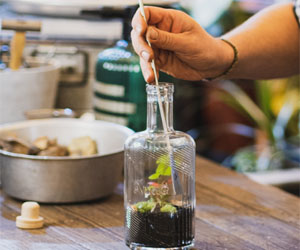

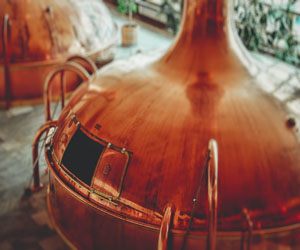
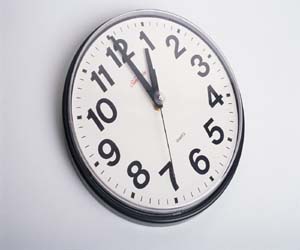
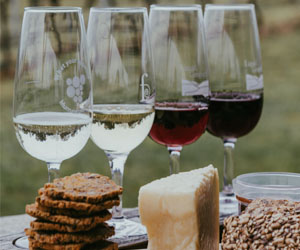
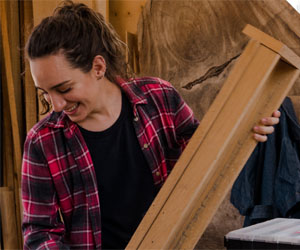
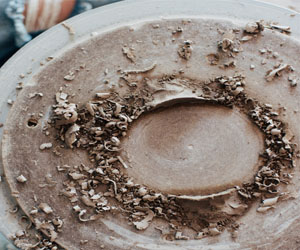
The Path To Healthier, Radiant Skin And Self-Confidence
 Understanding The Toxins: Non-toxic beauty advocates for the avoidance of harmful chemicals commonly found in many conventional beauty products. These chemicals, such as parabens, phthalates, formaldehyde, and artificial fragrances, have been associated with various health concerns, including allergies, hormonal disruption, and even cancer.
Understanding The Toxins: Non-toxic beauty advocates for the avoidance of harmful chemicals commonly found in many conventional beauty products. These chemicals, such as parabens, phthalates, formaldehyde, and artificial fragrances, have been associated with various health concerns, including allergies, hormonal disruption, and even cancer.
Clean Ingredients: Non-toxic beauty products are formulated with clean, safe ingredients. This means they exclude harmful chemicals and replace them with natural, organic, and plant-based alternatives. For example, clean skincare often uses ingredients like aloe vera, shea butter, and essential oils.
Sustainability Matters: Non-toxic beauty goes hand in hand with sustainability. Brands that champion non-toxic beauty often focus on eco-friendly packaging and sustainable sourcing of ingredients. By reducing their environmental footprint, they align with the principles of environmental consciousness.
Transparency And Accountability: Non-toxic beauty brands are known for their transparency. They provide clear information about the ingredients they use, their sourcing, and their production processes. This empowers consumers to make informed choices about the products they apply to their skin.
Cruelty-Free: Many non-toxic beauty brands are committed to cruelty-free practices. They don't test their products on animals, aligning with the values of ethical consumerism.
Non-Toxic Makeup: Non-toxic beauty extends beyond skincare to include makeup products. Non-toxic makeup brands provide a range of clean cosmetics, from foundation and lipstick to mascara and eyeshadow, offering a safer alternative for enhancing beauty.
Techniques For Discerning Palates
 Clarity: Assess the clarity of the wine. A hazy appearance might indicate issues with the wine's production, while crystal clarity suggests quality and careful handling.
Clarity: Assess the clarity of the wine. A hazy appearance might indicate issues with the wine's production, while crystal clarity suggests quality and careful handling.
Viscosity: Swirl the wine gently in the glass and observe the "legs" or "tears" that form on the side of the glass. Thicker legs indicate a higher alcohol content or residual sugar, which can provide clues about the wine's body.
2. Aroma Exploration: The aroma, or bouquet, of a wine is a critical aspect of the tasting experience. Swirl the wine in your glass to release its aromas, then take a moment to inhale. Wine's bouquet can be quite complex, and it's where the magic begins.
Primary Aromas: Primary aromas are derived from the grape variety itself. For instance, Chardonnay often exhibits scents of green apple or citrus, while Cabernet Sauvignon might have blackberry or black currant notes.
Secondary Aromas: These come from the fermentation process and often include scents like bread, yeast, or vanilla, particularly in the case of oak-aged wines.
Tertiary Aromas: Tertiary aromas develop during aging and might include earthy, spicy, or nutty notes.
3. Sip And Savor: Take a small sip of the wine and let it coat your palate. Assess the wine's taste, noting its flavors, acidity, sweetness, and tannins. Consider the balance and harmony of these elements.
Flavors: Describe the flavors you perceive, which can range from fruity and floral to earthy and spicy.
The Power Of Hands-On Expression
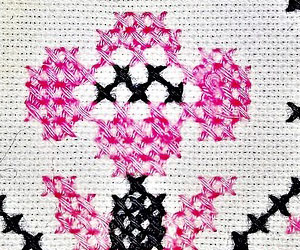 At its core, DIY creativity encourages self-expression. It allows individuals to break free from the constraints of pre-made products and to personalize their world. Whether you're sewing your own clothes, designing custom furniture, or creating unique artwork, DIY projects enable you to infuse your personality and style into every piece. This self-expression not only fosters a sense of ownership but also promotes a deeper connection to the things you make.
At its core, DIY creativity encourages self-expression. It allows individuals to break free from the constraints of pre-made products and to personalize their world. Whether you're sewing your own clothes, designing custom furniture, or creating unique artwork, DIY projects enable you to infuse your personality and style into every piece. This self-expression not only fosters a sense of ownership but also promotes a deeper connection to the things you make.
Engaging in DIY projects fosters a sense of accomplishment. There's an undeniable satisfaction in turning raw materials into a functional item or a work of art. Completing a DIY project instills a sense of pride and boosts self-esteem. It's a tangible reminder of your ability to create and innovate, which can be incredibly empowering.
Moreover, DIY creativity sparks problem-solving skills. Crafting your own solutions to challenges and hurdles in a project can be intellectually stimulating. It encourages critical thinking and resourcefulness as you seek to find the best way to achieve your vision. Whether it's figuring out how to fix a leaky faucet or designing a custom circuit board for a personal electronics project, DIY creativity demands a degree of innovation.
The DIY approach is cost-effective. Creating your own items or solving problems independently often saves money in the long run. Instead of purchasing expensive pre-made products or paying for professional services, DIY allows you to use your resources efficiently, relying on your skills and tools. It's a practical way to live sustainably while enjoying the process of creation.
DIY creativity also encourages a sense of community. Many individuals who engage in DIY projects find themselves participating in local crafting groups, makerspaces, or online forums where they can share ideas, gain inspiration, and collaborate with like-minded people. This sense of community fosters connections, friendships, and mentorships that enrich the overall experience of DIY creativity.
Creative Candle Making Ideas
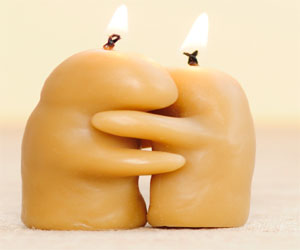 Flower-Embedded Candles: Press dried flowers or herbs between sheets of wax to create stunning, botanical candles. Whether you choose vibrant petals or aromatic herbs, these candles bring a touch of nature into your home.
Flower-Embedded Candles: Press dried flowers or herbs between sheets of wax to create stunning, botanical candles. Whether you choose vibrant petals or aromatic herbs, these candles bring a touch of nature into your home.
Ice Candle Art: Ice candles are a fascinating and innovative approach to candle making. Freeze wax around a pre-made mold filled with ice, and as the ice melts, it creates intriguing patterns in the candle. The end result is a truly one-of-a-kind piece.
Hidden Treasure Candles: Embed small, non-flammable objects like charms, gemstones, or small messages within your candles. As the wax melts, these hidden treasures are revealed, adding an element of surprise to your candle making.
Ombre Candles: Create a gradient effect by using different shades of the same color in a single candle. Gradually blend the colors as you pour the wax to achieve a smooth transition from one hue to the next.